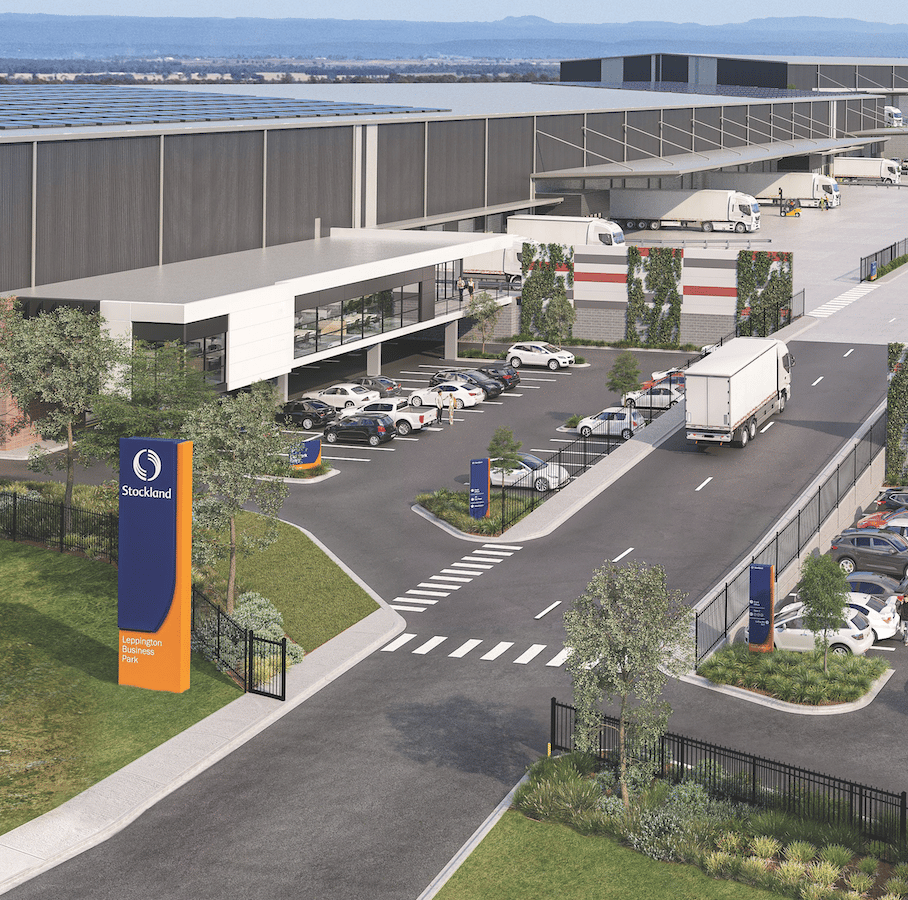Growing Sydney’s west and south west
Stockland is developing logistics parks in the ever-growing areas of Sydney’s west and south-west.
Tony D’Addona, Stockland Executive General Manager, Logistics, gives insight into what’s going on in this space – and what opportunities will become available as sites like the Western Sydney Aerotropolis open in the coming years.
As two councils in Sydney’s south west gave the green light for the diversified property group to develop its Leppington Business and Ingleburn Logistics parks, Stockland has strengthened its presence in the west and south west where the Western Sydney Airport and Western Sydney Aerotropolis are set to become economic catalysts for the broader region.
In a constrained market with elevated occupier demand, Stockland is providing much-needed supply for customers who are looking for strategic locations in growing areas with access to working populations and key infrastructure.
Changing market conditions
While still making up ground on its Asian and European counterparts, Australia’s e-commerce market is growing rapidly. It’s a major factor in driving demand for logistics space as online distribution requires a significantly larger footprint particularly when compared to traditional bricks-and-mortar operations.
The change in consumer behaviour brought about by the restrictions and lockdowns during the COVID-19 pandemic show no signs of abating.
Disruptions in supply chain have also created a step change in the way businesses strategically manage their inventory. There is a growing trend from a ‘just in time’ to ‘just in case’ with businesses preferring to hold more stock to mitigate supply chain risks, meet unexpected demand spikes, and potentially lock in material costs. Onshoring of manufacturing is also expected as a consequence of the pandemic and deglobalisation.
“Apart from the obvious demand drivers at play, another key consideration is supply of employment lands,” says Tony. “Changing land uses over time, which we understand as a creator of masterplanned communities, have seen growing pressure on employment lands – that is areas zoned for industrial or similar purposes – when they are rezoned for other purposes.
“When you combine these factors with the time it takes to rezone employment lands elsewhere, and provide the infrastructure for development to progress, supply has just not kept pace with demand.”
It’s these factors that have led to previously unseen rental growth and record low vacancy rates and highlight the importance of a healthy, functioning logistics sector with the right facilities in the right locations.
For example, Stockland’s Leppington Business Park and Ingleburn Logistics Park in south west Sydney are masterplanned estates that offer premium warehouses with ancillary offices, 5 Star Green Star ratings, and connections to key road and transport networks.
As the Western Sydney Aerotropolis nears completion, the airport and its surrounding lands will play an important part in delivering growth by supporting employment, population, infrastructure, and road upgrades which will further increase the attractiveness of the region.

Artist's impression only, subject to change.
A strategic property partner
These market conditions are influencing Stockland’s customers – some need to evolve their operations with bigger and more modern spaces, others want to downsize or take advantage of better locations, and some need to move to interim sites while they wait for their new premises to be completed.
“Many of our customers are looking to expand or diversify their operations into secondary markets,” says Tony. “We are working collaboratively with current tenants to place more than 150,000 square metres of demand across our portfolio and development pipeline.”
This highlights a point of difference. Stockland works in close partnership with its customers to leverage its diverse portfolio of assets and to ensure a smooth and effortless transition between spaces.
A growing region
“Population growth within the Western Sydney region plays a major role in influencing the demand for logistics assets, with an anticipated growth rate faster than that of Sydney as a whole,” says Tony.
“A further contributor to population growth will be the increased migration cap, with roughly 35,000 permanent migration visas will be made available in the coming year to help ease critical workforce shortages.
“There will be a need for a thriving logistics market to service this surging population,” he continues.
“The region is incredibly well located in regard to key infrastructure and the road and transport network.
“There is motorway access to key industrial hubs in the west, north west, and infill locations, the M5 delivers direct access to the existing airport and the ports, and it’s close to the Western Sydney Aerotropolis, as well as corridors to Melbourne and the ACT.”
As businesses grow and require bigger footprints, or more modern facilities, growth areas like Western Sydney are more desirable.
Development and redevelopment
“While we are seeing customers migrate towards Western Sydney, we are also seeing major redevelopment potential in our infill locations,” Tony says.
“Many of our ecommerce customers operate a B2C model. Their customers are individual consumers, so they are targeting ‘middle and last mile logistics’ locations, close to major population centres. They may be using smaller trucks and vans and are happy to pay more for less space closer to the city.
“While the traditional logistics operators operating B2B models are more likely to gravitate west towards bigger warehouses, more hardstands, and are generally using heavier vehicle types.
“If the pandemic and current market conditions have taught us one thing, it is that logistics assets need to be viewed as critical infrastructure for our cities, integral to their ongoing productivity and the liveability of our communities.”
“Our western Sydney developments will generate job opportunities throughout construction, and as tenants and their employees move in.”
